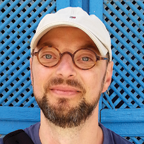Manage Amazon S3 with DragonDisk

Productivity Sauce
Amazon S3 provides ample storage at bargain prices, but to put the service to practical use, you need a client software. There are a few command-line utilities out there that let you manage your S3 storage space, but if you are looking for a graphical client, then you might want to give DragonDisk a try. This graphical S3 client allows you to manage buckets as will as synchronize local directories with S3 buckets. Although DragonDisk is not released under an open source license, it's available free of charge, and it runs on Linux. There is a .deb binary package for Ubuntu and Debian uses as well as a tarball package for other Linux distros. You can use the latter on Ubuntu, too. To run DragonDisk, grab the tar.gz archive, unpack it, and move the resulting dragondisk folder into your user home directory. Launch the terminal, switch to the dragondisk directory, and run the ./dragondisk command.
Before you can start using DragonDisk, you need to configure at least one Amazon S3 account (the application can handle multiple Amazon S3 accounts). Choose File | Amazon S3 accounts, press the New button, provide the required information, and press OK to save the new account. Similar to a conventional file manager, DragonDisk's interface is split into two panes. You can use one pane to view and manage local directories and the other to manage S3 buckets. Besides some basic tools for working with buckets and files, DragonDisk also sports a rather nifty synchronization feature which lets you keep local directories in sync with S3 buckets and vice versa. This allows you to use DragonDisk as a no-frills backup tool. To put this feature to work, you have to configure a synchronization job. To do this, choose Tools | Synchronize | Add/Remove folders, press the Add button, give the new job a name, and specify the source and target folders. Press Options to configure the synchronization settings, and press OK to save the synchronization job. To perform synchronization, choose the created job from the Tools | Synchronize menu.
DragonDisk is not the most advanced Amazon S3 client out there, but if you need a no-frills tool for syncing files and managing buckets, this simple tool is just the ticket.
Comments
comments powered by DisqusSubscribe to our Linux Newsletters
Find Linux and Open Source Jobs
Subscribe to our ADMIN Newsletters
Support Our Work
Linux Magazine content is made possible with support from readers like you. Please consider contributing when you’ve found an article to be beneficial.

News
-
Parrot OS Switches to KDE Plasma Desktop
Yet another distro is making the move to the KDE Plasma desktop.
-
TUXEDO Announces Gemini 17
TUXEDO Computers has released the fourth generation of its Gemini laptop with plenty of updates.
-
Two New Distros Adopt Enlightenment
MX Moksha and AV Linux 25 join ranks with Bodhi Linux and embrace the Enlightenment desktop.
-
Solus Linux 4.8 Removes Python 2
Solus Linux 4.8 has been released with the latest Linux kernel, updated desktops, and a key removal.
-
Zorin OS 18 Hits over a Million Downloads
If you doubt Linux isn't gaining popularity, you only have to look at Zorin OS's download numbers.
-
TUXEDO Computers Scraps Snapdragon X1E-Based Laptop
Due to issues with a Snapdragon CPU, TUXEDO Computers has cancelled its plans to release a laptop based on this elite hardware.
-
Debian Unleashes Debian Libre Live
Debian Libre Live keeps your machine free of proprietary software.
-
Valve Announces Pending Release of Steam Machine
Shout it to the heavens: Steam Machine, powered by Linux, is set to arrive in 2026.
-
Happy Birthday, ADMIN Magazine!
ADMIN is celebrating its 15th anniversary with issue #90.
-
Another Linux Malware Discovered
Russian hackers use Hyper-V to hide malware within Linux virtual machines.


Sync